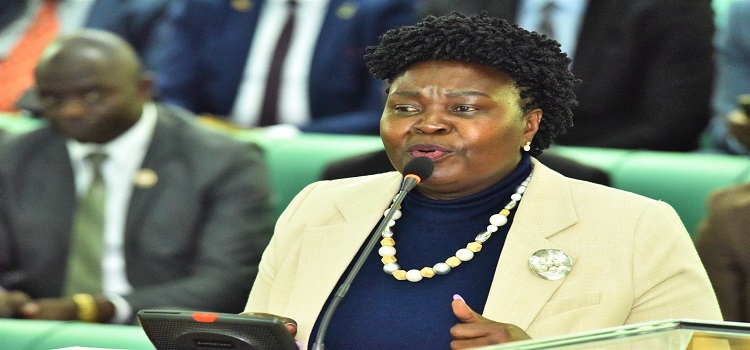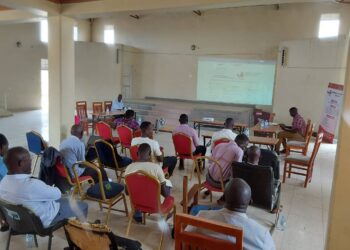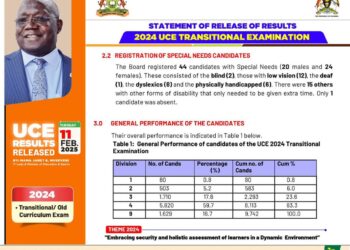In the heart of East Africa, Uganda is scripting a grand narrative of economic resurgence and strategic foresight, epitomized by the remarkable progress in its oil and gas sector.
The orchestrator of this ambitious symphony is the Minister of Energy and Mineral Development, Ruth Nankabirwa, whose recent briefing has unveiled a comprehensive update on key projects, marking a pivotal moment in the nation’s pursuit of energy prosperity.
The Refinery Revolution
At the forefront of this transformative journey is the eagerly awaited $4 billion refinery, a linchpin in Uganda’s midstream oil and gas endeavors.
Minister Nankabirwa, with palpable enthusiasm, disclosed that a Memorandum of Understanding (MoU) was officially signed on December 22th, 2023, between the Ugandan government and Alpha MBM Investments LLC from the United Arab Emirates.
This historic agreement outlines the terms of cooperation and negotiation, setting the stage for what promises to be a monumental collaboration.
Negotiations for critical commercial agreements between the government and Alpha MBM Investments LLC commenced on January 16th, 2024. The multifaceted discussions are anticipated to conclude within the next three months, injecting a sense of urgency and optimism into Uganda’s oil and gas landscape.
The momentum behind the refinery project gained traction after the expiration of the Project Framework Agreement with the Albertine Graben Energy Consortium on June 30, 2023.
Following this, President Yoweri Museveni directed a shift to a public sector-led initiative, sparking renewed vigor and commitment to the refinery’s realization.
The Ministry of Energy and Mineral Development, in response to this directive, engaged stakeholders in a strategic formulation for the refinery project.
Expressions of Interest (EOIs) flooded in from various potential investors, leading to an evaluation that brought Alpha MBM Investments LLC to the forefront. With the capacity to refine an impressive 60,000 barrels of oil per day, the refinery project becomes a cornerstone of Uganda’s ambitions to harness its oil wealth for economic prosperity.
EACOP: A Cross-Border Marvel
Simultaneously, the East African Crude Oil Pipeline (EACOP) has emerged as a testament to regional cooperation and infrastructural innovation.
Having secured its construction license in January 2023 under the Petroleum (Refining, Conversation, Transmission and Midstream Storage) Act, 2013, EACOP embarked on a journey of transformative activities.
Contracts for construction and line pipes were issued, and early civil works commenced in Tanzania. The collaborative efforts of Nyanza Roads Ltd, JV Spec, and the China Petroleum Pipeline Engineering Company (CPP) set the stage for pipeline construction.
The project, sprawling across approximately 2,740 acres in Uganda, has implications for 3,660 individuals, with 177 requiring resettlement housing. A meticulous process of compensation agreements, with 95% signed and 91% completed, underscores the commitment to fair and inclusive development.
Notably, the first 100km of the pipeline made a triumphant journey from Dar es Salaam to the coating plant in Ishaka, Western Uganda, signaling not only progress but the interconnected momentum, crucial for the seamless execution of upstream projects, including Tilenga and Kingfisher.
Upstream Marvels: Tilenga and Kingfisher
The epicenter of progress at the Tilenga project unveils the Industrial Area, a crucible of innovation. Over 85% of this expansive industrial marvel has been assigned to contractors like Schlumberger, China Oil Services Limited Uganda, ZPEB, Vallourec, and McDermott & SINOPEC.
Collaboratively, they are actively engaged in various facets of the project, propelling the realization of a Central Processing Facility capable of handling 190,000 barrels.
Simultaneously, at Kingfisher, the development plan unfolds with a Central Processing Facility (CPF) boasting a 40,000-barrel capacity and 31 wells across four well pads.
The Buhuka flats witness the construction of a CPF, where design and procurement are managed in China, while on-site construction and installation progress in Bugoma.
China Offshore Oil Engineering Company (COOEC) and China Petroleum Engineering and Construction Corporation (CPECC) lead this transformative endeavor.
Environmental Stewardship and Economic Impact
Since the groundbreaking discovery of oil in 2006, Minister Nankabirwa proudly attests that Uganda has adhered to the highest environmental, industrial, legislative, and regulatory standards.
The sector, a monumental contributor to the country’s GDP, has amassed a staggering $8.6 billion and created over 12,000 jobs. This is not merely a narrative of industrial progress; it is a symphony of economic upliftment, promising enduring benefits for the next 25 years.
As Uganda edges closer to the historic moment of first oil production in the coming year, the echoes of this grand symphony resonate with a promise that transcends generations.
The nation invites the world to witness its ascent to the summit of oil and gas prowess, where ambition converges with strategic foresight to reshape the economic landscape.
Uganda’s oil and gas sector is not just advancing projects; it is shaping a narrative of resilience, collaboration, and lasting prosperity.
Do you have a story in your community or an opinion to share with us: Email us at editorial@watchdoguganda.com













